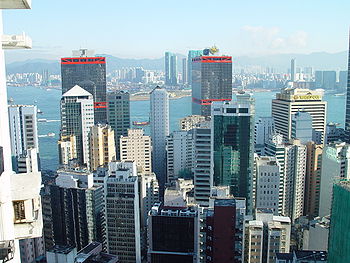Generative Cities: The Future of Urban Intelligence

Reprinted from PSFK’s “Need to Know” magazine
In the future, cities will be judged by their generativity. Over seventy percent of the world’s population, and almost all of the globe’s skilled talent, will live in cities by the year 2050. The globally mobile entrepreneur will decide where to invest capital and where to live will depend on a city’s ability to be generative, i.e. create a productive, participatory and personalized urban experience.
It is already conventional wisdom that cities will become “smart” through ubiquitous information technology. But the key to unlocking a city’s greatness lies not in technology but the principle of generativity. Generativity is the ability to use technologies to create an enabling infrastructure for connectivity and creativity. The Internet is our best example of a generative structure: it was designed to have an seemingly infinite capacity for people to connect to each other; to create content, disruptive business models, and successful companies; and to store, consume, and share vast amounts of information. And yet despite its vastness, each interaction with the Internet feels increasingly personalized.
Cities that are looking to become global hubs of commerce and innovation must come to embody these values of openness and modularity. The city’s generative infrastructure then becomes the backbone for its economic and cultural engines. Many of the pieces for generative cities are already falling into place. For example, two young New York engineers watch a free class online on how to build a robotic car (the startup Udacity offers free courses on artificial intelligence); while sitting in Central Park, their mobile phone alerts them that another student from the class is nearby (so-mo [social mobile] startup Highlight promises such “people discovery” or ”social ambience”); a coffee together results in a decision to raise money for a robotic car (Kickstarter provides crowd-sourced seed funding for projects); for several months, they meet every night in a city-funded incubator space where they have access to space, servers, technologies, and receive mentorship from leading entrepreneurs (both the New York city government and private companies offer such incubators). For the two engineers, the city represents a public-citizen-private partnership that has created an environment primed for participative production.
An up-an-coming component of generative infrastructure will also be wearable sensor devices beyond the mobile phone that create an ever more personalized experience of the city. This means that as the two engineers move through the city, their devices (whether a FitBit tracking their calories or Google augmented reality glasses) elicit tailored responses from the environment. When they each stand in front of the same Macy’s window, for instance, the display changes depending on the age and gender of the viewer (startup Immersive Labs creates marketing kiosks that change advertising based on facial recognition software). The potential to innovate new products and services for such emergent generative infrastructures is limitless.
Moving forward, the ability to govern networked infrastructures is the crucial task for city authorities. They must protect citizens from misuse and cyber-crime through security protocols, but must also encourage experimentation and hacking. Generativity, therefore, lies at the edge of control and chaos, and the most successful cities in the future will master this balancing act.
Ayesha Khanna is Director of the Hybrid Reality Institute, a research and advisory group that focuses on human-technology co-evolution, geotechnology and innovation. She also directs the Future Cities group at the London School of Economics and is author of the forthcoming books Hybrid Reality (2012) and The Generative City (2013).





